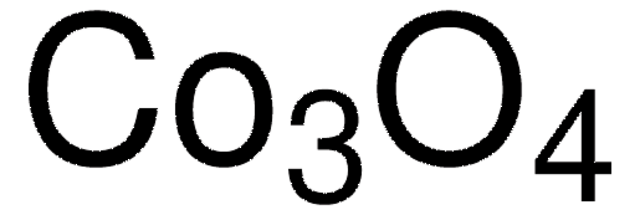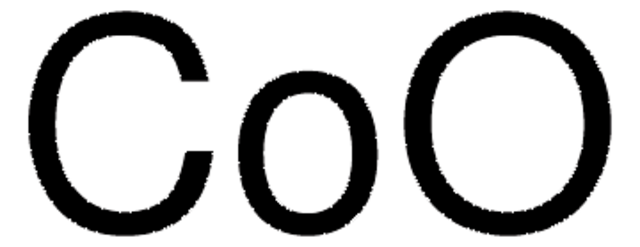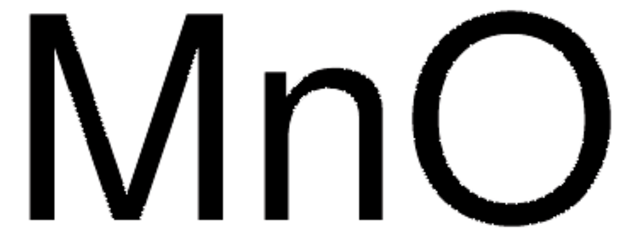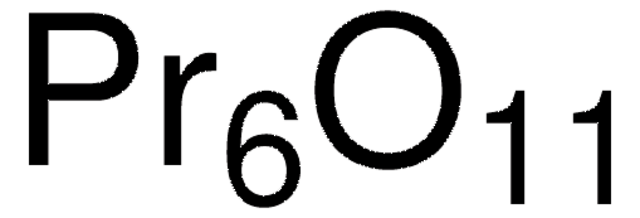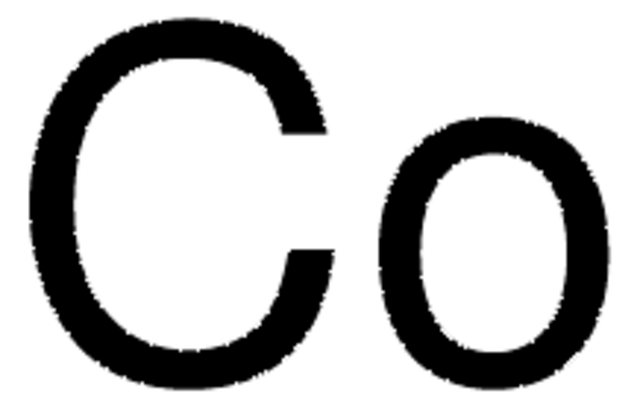221643
Cobalt(II,III) oxide
powder, <10 μm
Sinónimos:
Cobaltosic oxide, Tricobalt tetraoxide
About This Item
Productos recomendados
form
powder
Quality Level
particle size
<10 μm
mp
895 °C (dec.) (lit.)
density
6.11 g/mL at 25 °C (lit.)
application(s)
battery manufacturing
SMILES string
O=[Co].O=[Co]O[Co]=O
InChI
1S/3Co.4O
InChI key
LBFUKZWYPLNNJC-UHFFFAOYSA-N
¿Está buscando productos similares? Visita Guía de comparación de productos
Categorías relacionadas
General description
Application
- Synthesis of diphenylalanine/cobalt oxide hybrid nanowires and their application to energy storage.: This study demonstrates the synthesis of hybrid nanowires using diphenylalanine and cobalt oxide, highlighting their potential for enhancing energy storage capacities (Ryu et al., 2010).
signalword
Danger
hcodes
Hazard Classifications
Aquatic Chronic 3 - Carc. 1A Inhalation - Resp. Sens. 1
Storage Class
6.1C - Combustible acute toxic Cat.3 / toxic compounds or compounds which causing chronic effects
wgk_germany
WGK 1
flash_point_f
Not applicable
flash_point_c
Not applicable
Elija entre una de las versiones más recientes:
¿Ya tiene este producto?
Encuentre la documentación para los productos que ha comprado recientemente en la Biblioteca de documentos.
Los clientes también vieron
Artículos
Magnetism and magnetic materials have been of scientific interest for over 1,000 years. More recently, fundamental investigations have focused on exploring the various types of magnetic materials and understanding the magnetic effects created by electric currents.
Magnetic materials permeate numerous daily activities in our lives. They are essential components of a diversity of products including hard drives that reliably store information on our computers, decorative magnets that keep the shopping list attached to the refrigerator door, electric bicycles that speed our commute to work, as well as wind turbines for conversion of wind energy to electrical power.
Nuestro equipo de científicos tiene experiencia en todas las áreas de investigación: Ciencias de la vida, Ciencia de los materiales, Síntesis química, Cromatografía, Analítica y muchas otras.
Póngase en contacto con el Servicio técnico